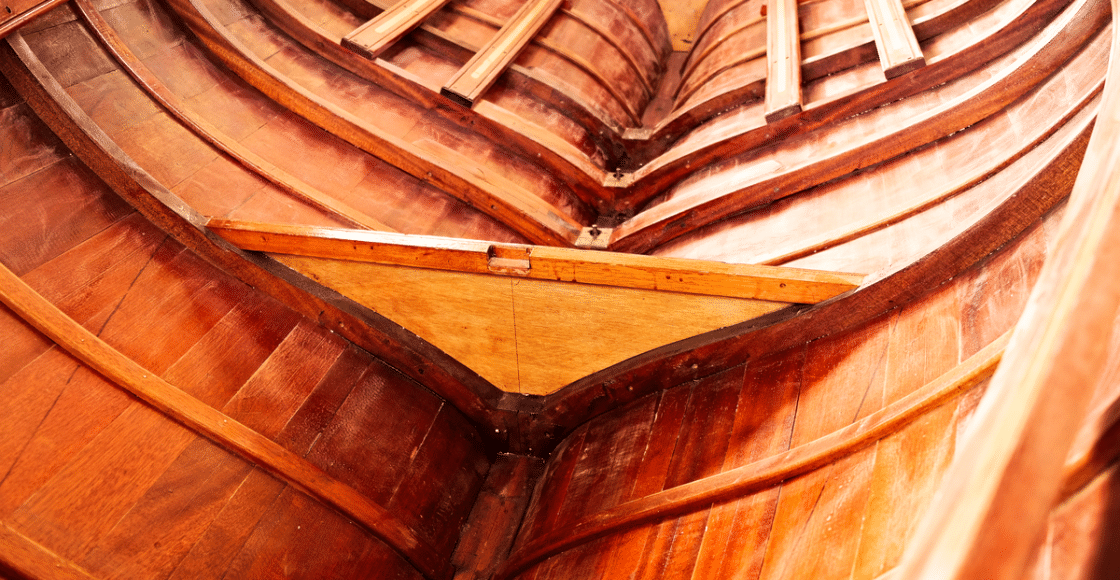Boat Stringers: What Are They & When Do you Know It’s Time to Repair Them
Last Updated on September 26, 2025 by Boatsetter Team
Boat stringers are the structural backbone of your vessel. Running lengthwise along the hull, they provide strength, support the deck, and hold critical components like inboard engines. Without solid stringers, your boat’s hull can flex, crack, or even fail. Stringers are typically made of:
-
Wood (common in older boats)
-
Fiberglass encapsulated wood (common in modern fiberglass boats)
-
Fiberglass-only stringers (seen in newer prefabricated builds)
In wooden boats, stringers are usually sealed with varnish or epoxy, while fiberglass boats rely on fiberglass-encased wood.
Boat owners earn an average of $20,000 annually by renting-out their boat
What’s the purpose of stringers in a boat?
Think of stringers as the floor joists of a house. Along with ribs and bulkheads, they form a grid that stiffens the hull and supports the deck. If a stringer weakens, your entire boat structure suffers. Essential equipment such as engines and mounts are often bolted to stringers. A rotten stringer isn’t just a nuisance, it’s a safety hazard.
Signs of rotten boat stringers
Wondering if your boat stringers are going bad? Here are key signs:
-
Brown stains or water seepage on stringers
-
Soft spots on the deck above the stringer
-
Cracks in fiberglass encasement
-
Delaminating fiberglass or spongy flooring
-
Bilge stays full of water
-
Wet or rotten wood shavings when drilled for inspection
Pro tip: If you drill into a fiberglass-encased stringer and the shavings are wet or soft, you likely have rot beneath.
Can you replace part of a boat stringer?
Yes, but it’s not ideal. Since stringers endure constant stress from waves, hull weight, and engines, replacing only part of a stringer may weaken the structure. For safety, most boatyards recommend replacing the entire stringer section.If you do tackle a DIY repair:
-
Match the original wood type and dimensions
-
Re-glass with proper epoxy and fiberglass layers
-
Ensure exact placement of the new stringer
How much does it cost to fix a boat stringer?
Repair costs vary widely depending on your boat size and materials:
-
Small boats: ~$1,000–$2,500 for partial repairs
-
Mid-sized boats: $3,000–$6,000 for full replacement
-
Large boats/yachts: $10,000+ (sometimes exceeding boat value)
Since stringers form the foundation of your hull, most repairs require professional expertise. DIY is possible but risky for larger boats or those with inboard engines.
Your boat can help you pay boat maintenance costs
Prevention can save thousands in repairs:
-
Keep your bilge dry
-
Seal cracks in fiberglass immediately
-
Inspect stringers regularly for discoloration or soft spots
-
Use proper ventilation and covers when storing
Boat ownership comes with ongoing maintenance expenses, but your boat can also help pay for itself. Many Owners earn an average of $20K per year renting their boats when they’re not using them. With Boatsetter, you can:
-
Rent your boat bareboat or with a captain
-
Choose when and how often to list
-
Offset costly repairs like stringer replacement
List your boat and start earning
Boat stringers FAQs
Got questions about boat stringers? We’ve got answers.
How long do boat stringers last?
With proper care, fiberglass-encased stringers can last decades. Wooden stringers without protection rot faster, especially in boats with wet bilges.
Can you repair a rotten boat stringer without replacing it?
Minor cracks or surface rot may be patched with epoxy and fiberglass. Severe rot usually requires full replacement.
What causes boat stringers to rot?
Excess moisture, poor drainage in the bilge, and age are the main culprits.
What are the most affordable options for boat stringers?
The most budget-friendly option is usually marine-grade plywood encapsulated in fiberglass, since it combines strength with lower cost compared to composite or all-fiberglass stringers. For small boats, DIY repairs using treated wood and epoxy can also save money, though they require skill and careful sealing to prevent future rot.

Boatsetter empowers people to explore with confidence by showing them a world of possibility on the water. Rent a boat, list your boat, or become a Boatsetter captain today.










